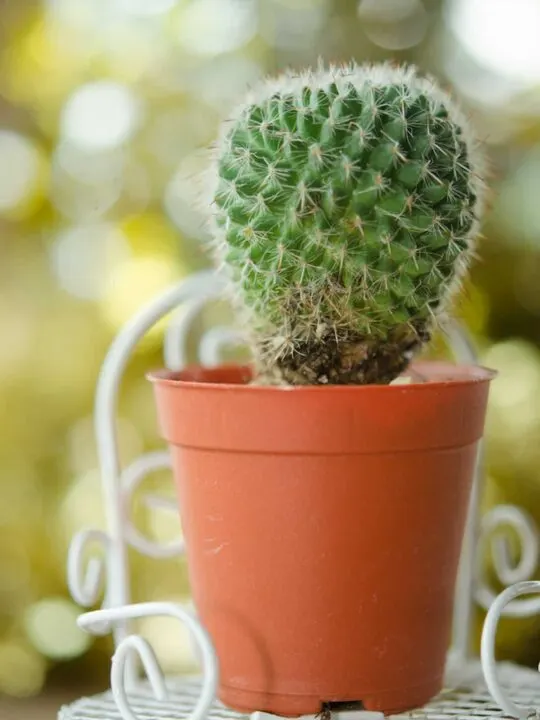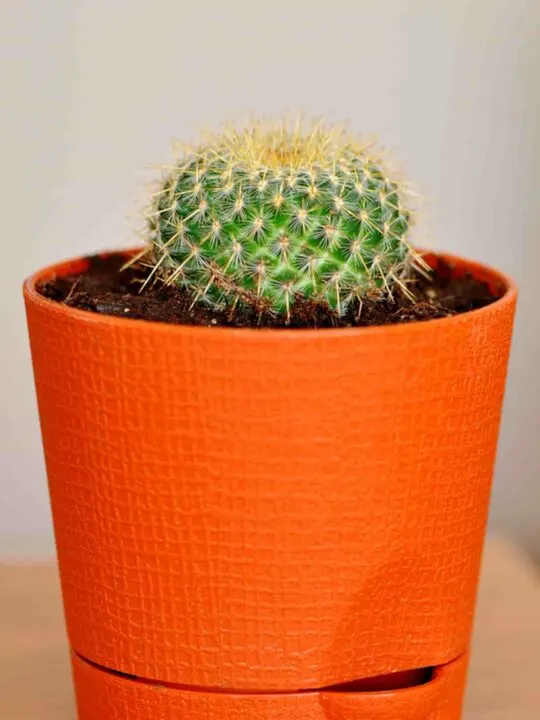Regardless of the variety of cacti that you own, most varieties of cacti appear green and vibrant when they are healthy. If yours no longer appears this way, you may wonder, why is my cactus turning purple?
Cacti can turn purple for several reasons, most of which are related to stress. While some varieties of cacti can turn purple seasonally, this condition is more often a sign of soil problems, excessive watering, inappropriate light quality, poor temperature control, or root damage.
Read on to learn more about why your cactus is turning purple and what steps you can take to fix your purple cactus.

Reasons Your Cactus is Turning Purple
Soil Problems
Cacti that are turning purple, or other colors like pink or red, can sometimes have problems with their soil. This can include nutritional deficiencies in the soil, which can be caused by reusing old potting soil, or it can also be due to the type of soil that is used.
Almost all varieties of cacti must be grown in cacti potting soil. This type of soil includes a certain amount of sand that allows for the efficient draining of excess water, which decreases the chance that issues like root rot will develop.
Cacti potting soil is also significantly more aerated than other types of potting soil. This not only helps the soil to dry out between waterings but also allows fresh air and oxygen into the potting mix, which helps to keep the roots of your cactus healthy.
Cold Conditions or Drafts
Cacti can sometimes turn purple if they are experiencing unusually cold temperatures or drafts of cold air. These drafts can occur when your cactus is placed too close to a window, air vent, or doorway. If your cactus is turning purple, for this reason, it is usually due to prolonged exposure to cold temperatures or cold conditions combined with wind.

Excess Watering (Root Rot)
Most varieties of cacti are native to desert environments. Because of this, they do not require nearly as much water as other plants and must be given ample time to dry out completely between each watering.
Soil that is not intended for cacti can have issues draining efficiently, allowing the root system of your cactus to sit in water. While many plants benefit from this, the roots of a cactus must be allowed to dry out fully between waterings to prevent root rot.
Root rot occurs when your plant roots start decomposing in the soil. This most often happens due to overwatering combined with using the incorrect type of potting soil for your cactus.
Too Much Direct Sunlight
Although wide varieties of cacti are native to desert habitats, not all of them are. Certain varieties of cacti are not as tolerant to sunlight as desert cacti and are more prone to developing sun scorching.
The most common cause of scorched cacti of any kind is moving them from an area with low, indirect light to an area with too much direct light too quickly. Because plants must develop an adequate amount of chlorophyll to process sunlight, plants that have received ambient or electronic light for many months can burn after only a couple of hours in direct sunlight.

How to Fix a Purple Cactus
Identify the Appropriate Cause
Ultimately, you know the most about the environmental conditions of your cactus. When identifying the specific issue with your cactus, consider the different causes of purpling we mentioned above.
Once you have identified the most likely cause of your cactus turning purple, you will want to take steps to improve its living conditions accordingly.
Repot Your Cactus
If your cactus has soil issues, you will want to repot your cactus. If the incorrect type of soil was used in the original potting, attempt to shake bits of this out of the root system and then carefully repot your cactus in more appropriate soil.
If your cactus is also rootbound, you will want to use this opportunity to switch your cactus to a slightly larger pot. If your cactus still has plenty of room for new roots in its original pot, this step is not necessary.
Move Your Cactus to a Warmer Area
If your cactus is turning purple because it has been exposed to drafts, you will need to find a warmer area to keep it. Many plant owners keep cacti near windows for the best amount of natural sunlight, but this can sometimes cause problems for your cactus in the wintertime.
Drafts can form around windows, air vents, and doors, even between rooms. In general, it is a good idea to keep your cactus away from any sources of hot or cold air so that they can maintain consistent temperature levels regardless of the season.
Allow the Soil to Dry Out
In cases where your cactus is turning purple because it has been significantly overwatered, you will need to take steps to dry the soil out. You should cease any watering until this issue is resolved, and be sure to empty any drip trays underneath your cactus’s pot.
If the issue is severe, you may gently remove the soil and root ball from the pot to allow better ventilation. This should only be done if you are confident you can remove the root system from the pot without causing damage, as the roots are significantly more fragile in this overwatered state.
Reduce Exposure to Direct Sunlight
Although most cacti love extended hours of direct sunlight, there are cases where they can receive too much sunlight. If your cactus has developed scorching, keep it in a lower light area for longer periods.
If you are transitioning your cactus to a high-light area, give it time to adjust to this change by increasing the amount of direct sunlight it receives by 30 minutes each day until the ideal amount of time is reached.
Final Thoughts
Although noticing the color purple on your cactus can be startling, this condition is not a death sentence. Because this color change in cacti is most often a sign of environmental stress, simple interventions or changes to your care routine can significantly improve the health of your cactus.

Hi there, my name is Allie and welcome to my blog; GareningWithAllie!
Much of what you see written here is just our personal experiences with gardening. Along with the content I write here, there is also a unique collection of gardening topics covered by some of our close friends. I hope you find everything you read here to be helpful, informative, and something that can make your gardening journey the most lovely experience ever! With that said, Happy Gardening!
